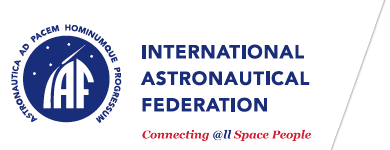Technical programme
GLEX-2012 — Global Space Exploration Conference
16. Embedded Panels
16.1. NASA Space Launch System
NASA’s Space Launch System (SLS) will offer an unsurpassed capability for human and scientific missions beyond low-Earth orbit. As the first exploration-class launch vehicle since the Saturn V, the SLS will help astronauts expand the boundaries that have limited us for the last 40 years. From launching planetary probes and astronomical observatories, to the first human trips to asteroids and Mars, the SLS will provide the volume and lift capability to perform international missions such as those outlined in the Global Exploration Roadmap. Set to fly in 2017, this capability will open a new era of discovery from the unique vantage point of space.
- Plenary organizer
Peter Montgomery
Aerospace Testing Alliance — United States
- Moderator
Don Sauvageau
Orbital ATK — United States
16.2. Utilization of Off-Earth Resources: The Challenges Ahead
The panel will discuss the state of knowledge regarding the ability to confirm availability and use off-Earth resources, including commercial and scientific endeavors. They will discuss the current challenges related to resources on asteroids, the Moon and other bodies. They will discuss the potential contributions of human and robotic spaceflight to meeting these challenges
- Plenary organizer
Randy Liebermann
History of Technology — United States
- Moderator
TBD
—
16.3. Human Health and Performance: Mitigating Risk for Space Flight and Improving the Quality of Life on Earth
This panel will discuss managing human health and performance risks for spaceflight and how this work contributes significantly to improving the practice of medicine, environmental health monitoring and technology development here on earth. The highest human health risks for exploration missions will be introduced, along with insight into efforts to understand and mitigate the risks. The panel will discuss the benefits of this work for improving our quality of life on earth, including recent partnerships with academia, industry and governments resulting in earth/space benefits, and application to the terrestrial practice of clinical and remote telemedicine. Topics discussed include radiation, behavioral health, nutrition, ultrasound applications and mobile health applications.
- Plenary organizer
Eugenia Bopp
KBR — United States
- Moderator
Jeffrey R. Davis
Exploring 4 Solutions — United States
16.4. The ISECG Global Exploration Roadmap: Why is it Important and What Capabilities are Needed
This panel seeks a concentrated discussion on the GER, looking for innovative solutions and ideas to advance its strategy for coordinated human and robotic exploration. It will have two sub-panels. The first subpanel will discuss the GER itself and the impact of its development and release. The second will discuss the capability driven approach reflected in the GER; taking a step wise approach to developing advanced capabilities by building on demonstrated capabilities and maturing technologies. What near term capabilities can be developed to take the first international steps beyond low Earth orbit?
- Plenary organizer
Jason Hundley
Zero Point Frontiers Corp. — United StatesJames Free
National Aeronautics and Space Administration (NASA) — United States
- Moderator
Jeffrey Hanley
National Aeronautics and Space Administration (NASA), Johnson Space Center — United StatesMark Kinnersley
EADS Astrium Space Transportation GmbH — Germany
16.5. The ISECG Global Exploration Roadmap: Missions and Technologies Advancing Towards Mars
This panel seeks a concentrated discussion on the GER, looking for innovative solutions and ideas to advance its strategy for coordinated human and robotic exploration. It will have two sub-panels. The first will focus on design reference missions, both early and long term. Discussing missions which meet the GER’s common goals and objective will highlight the benefits provided by advanced technologies. The second will focus on technology challenges for enabling human Mars missions with a discussion on what agencies are investing in today that can lead to the advanced technologies that will eventually be essential for a sustainable and affordable international space exploration effort. It will discuss how early deployment of many of these technologies will significantly enhance our ability to explore intermediate destinations such as the Moon and asteroids.
- Plenary organizer
Jason Hundley
Zero Point Frontiers Corp. — United StatesJames Free
National Aeronautics and Space Administration (NASA) — United States
- Moderator
James Free
National Aeronautics and Space Administration (NASA) — United StatesSteve Creech
National Aeronautics and Space Administration (NASA) — United States
16.6. The ISECG Global Exploration Roadmap: Destinations and Commercial Markets
This panel seeks a concentrated discussion on the GER, looking for innovative solutions and ideas to advance its strategy for coordinated human and robotic exploration. It will have two sub-panels. The first will discuss destination specific activities. What can be done at each location and what value will it bring in meeting common goals and objectives. The second panel will focus on commercial market opportunities which may be created with the future exploration missions.
- Plenary organizer
Jason Hundley
Zero Point Frontiers Corp. — United StatesJames Free
National Aeronautics and Space Administration (NASA) — United States
- Moderator
Jason Hundley
Zero Point Frontiers Corp. — United States
